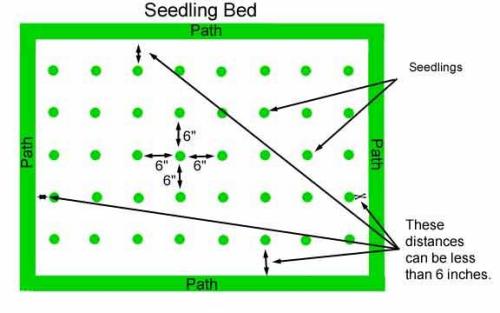Great question and one I get a lot of comments on from visitors who are considering planting some seedlings of their own.
I have 3 rotational seedling beds, bed # 1 has 3 rows 25' x 4 1/2', bed #2 has 2 rows 25' x 4' and 1 row 25' x 3', bed #3 has 2 rows 35' x 4'. Bed 1 typically holds about 2500, bed 2 and 3 about 2000. I say about because I have planted from 1500 to 2500 each year depending on which bed is open for planting and how many seeds I started. This year, 2023, bed 1 was open and I stuffed just under 3000 in it.

I won't be doing that again! Hard on the back planting them all, I'm not getting any younger and when the bed needs to be emptied in 3 years I'm the one who will be digging out all the rejects. Seedlings are planted roughly 4" apart in rows 4" apart. I eyeball my planting so some may be 3" or 5", as long as I can get my barefoot between the tags it works. That way I can tag keepers in the middle without stepping on a tag. I go across the bed rather than the length of the bed like most hybridizers. I find weeding easier, you can reach all the way to the middle of the bed between the sdlg rows and just pull everything toward you. Also mapping the beds and finding tags is easier for me with them planted that way. Typically a year 2 1st bloom sdlg may have 1 - 3 fans. A year 3 2nd bloom 2 - 4 fans, increase is slower in zone 4 so I think I can get away with tighter planting. If I ever have any question on what fan is what come keep time, the fan with the tagged scape is kept.
Here's some images
This one shows bed 1, on the far left are 3 rows of spring planted seedlings (one partial row visible), then there's 2 rows of "keepers" and way over on the far right just barely in the image are the two long rows of bed 3. In the upper section by the pot shed is bed 2. There's a path between the keepers and bed 2. This was mid July 2020. Bed #2 was on it's 2nd bloom year, bed #3 on the first bloom year after planting the prior year. Seedlings in bed #2 were removed that fall to make room for planting the next years seedlings.
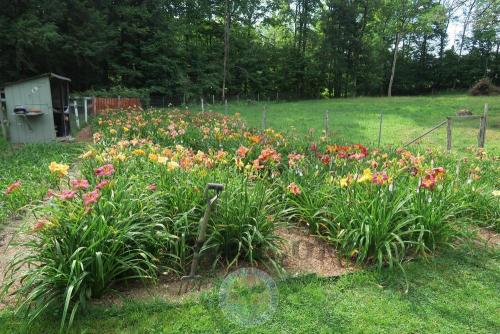
This image shows those planted seedlings from the year before in bed 3 blooming along with the 2 rows of keepers and the seedlings in bed #3 on their second bloom year. Bed # 2 that was emptied the prior fall is planted with new seedlings from last years seeds. This is mid July 2021
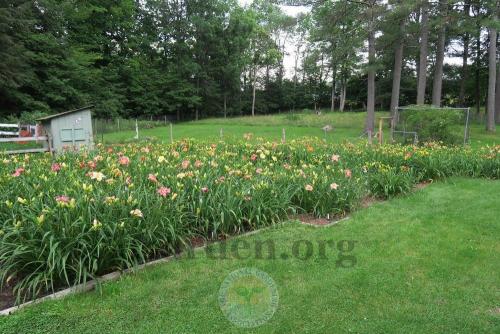
So for each bed, first year is planting, second year is 1st bloom, third year is 2nd bloom then emptied in fall. I move my tagged keepers both bloom years to keeper beds. I have 4 rows for keeps based on like form or goal, the two rows between the seedling beds and two rows in the middle of the front lawn "box bed". Once in the keeper bed they get around a 16" planting square to themselves.The upper and lower sides of box bed are for lineouts once a seedling gets to that stage, making it through 4 years of deselecting, I start deselecting keepers as soon as the first year after moving them from the seedling bed. Usually there's a few that get taken out that first year, something died over the winter or is downright ugly. Second and third years I start getting more picky on plant habit and bloom traits. By year 4 they better have it together or be a super bridge plant to stay. The possible intro gets 2 years of lineout, single and double fans, to prove itself again and get back to performing quickly....Oct. lining, north facing bed, zone 4.
The box bed is in the foreground of this image.
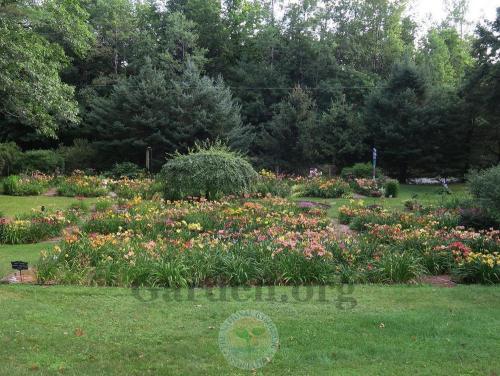
Unless you have another area to put your keeps from the 3 rotating seedling beds you may need to dedicate a portion of each of those beds to placing the keepers each year. There's a lot of factors that go into keepers, your goals, what parents you're working with, bridge plants, possible intros, selling or just for fun...even the success of each seedling crop based on these and other factors.
Whatever you do, have fun!
I just read Dennis's reply while finishing this up...we are clearly on opposite ends of the seedling bed.


So many thoughtful and thought provoking answers being posted proving no one is right or wrong, it's whatever works the best in each hybridizers situation.
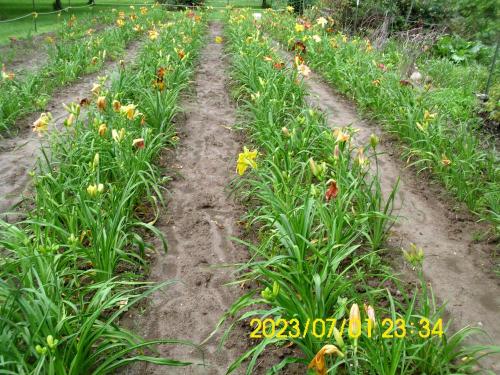 first year seedlings three wide.
first year seedlings three wide.
